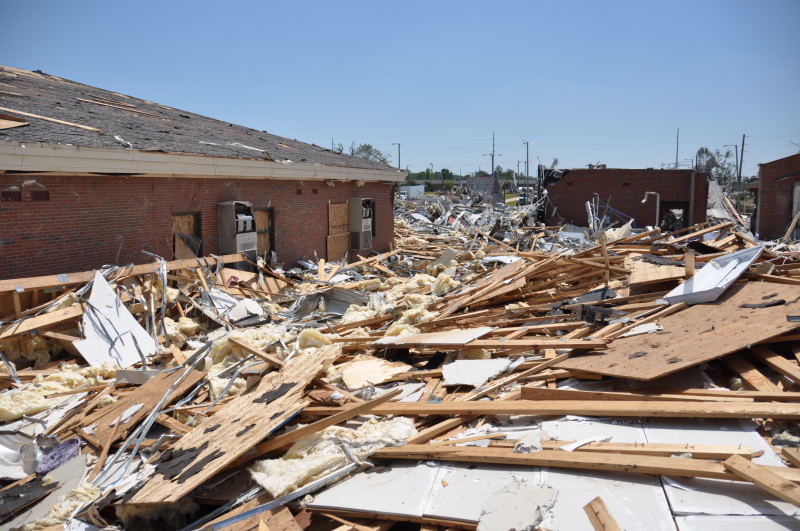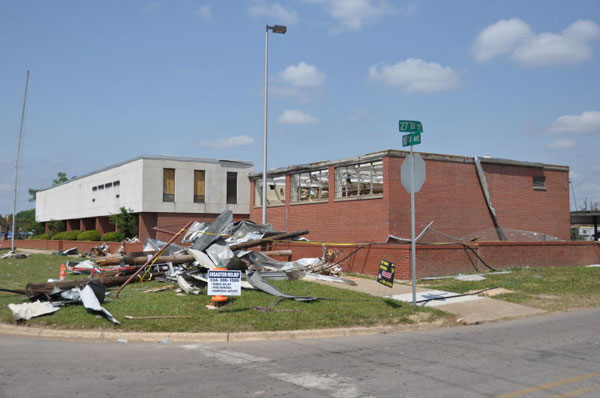Between May 7 and 9, 2011, ATC Board Director Tom Smith visited the tornado stricken areas of Georgia and Alabama as a member of the FEMA Mitigation Assessment team. He has shared the following damage photos:

Photo showing damage to a fairly new school building in Alabama. The school had 3 separate wings and a central area. This shot is looking at a wing that collapsed (part of the central area is in the background -- it too collapsed). To the left is one of the wings that did not appear to have structural damage. However, a section of the corridor wall partially collapsed. Photo courtesy of the FEMA Mitigation Assessment Team.

Photo showing furniture store with broken windows, shingle loss, and a nearly collapsed brick veneer in Alabama. Photo courtesy of the FEMA Mitigation Assessment Team.
.jpg)
Photo showing hardware store with collapsed CMU veneer and metal wall panels in Alabama. The pre-engineered frame and purlins did not appear to have structural damage. Photo courtesy of the FEMA Mitigation Assessment Team.

Photo showing damaged military recruitment center in Alabama. The wing with the brick veneer lost most of the roof deck. The other wing had glazing damage, but no apparent structural damage. Photo courtesy of the FEMA Mitigation Assessment Team.

Photo showing a damaged wing a very large middle school in Georgia. This wing lost most of its roof deck. One gym lost some deck panels, but a second gym had no apparent structural damage. Some other wings had glazing damage and/or some roof covering or deck damage, while other wings had no apparent damage. Photo courtesy of the FEMA Mitigation Assessment Team.
5/2011




 Michael Valley
Michael Valley